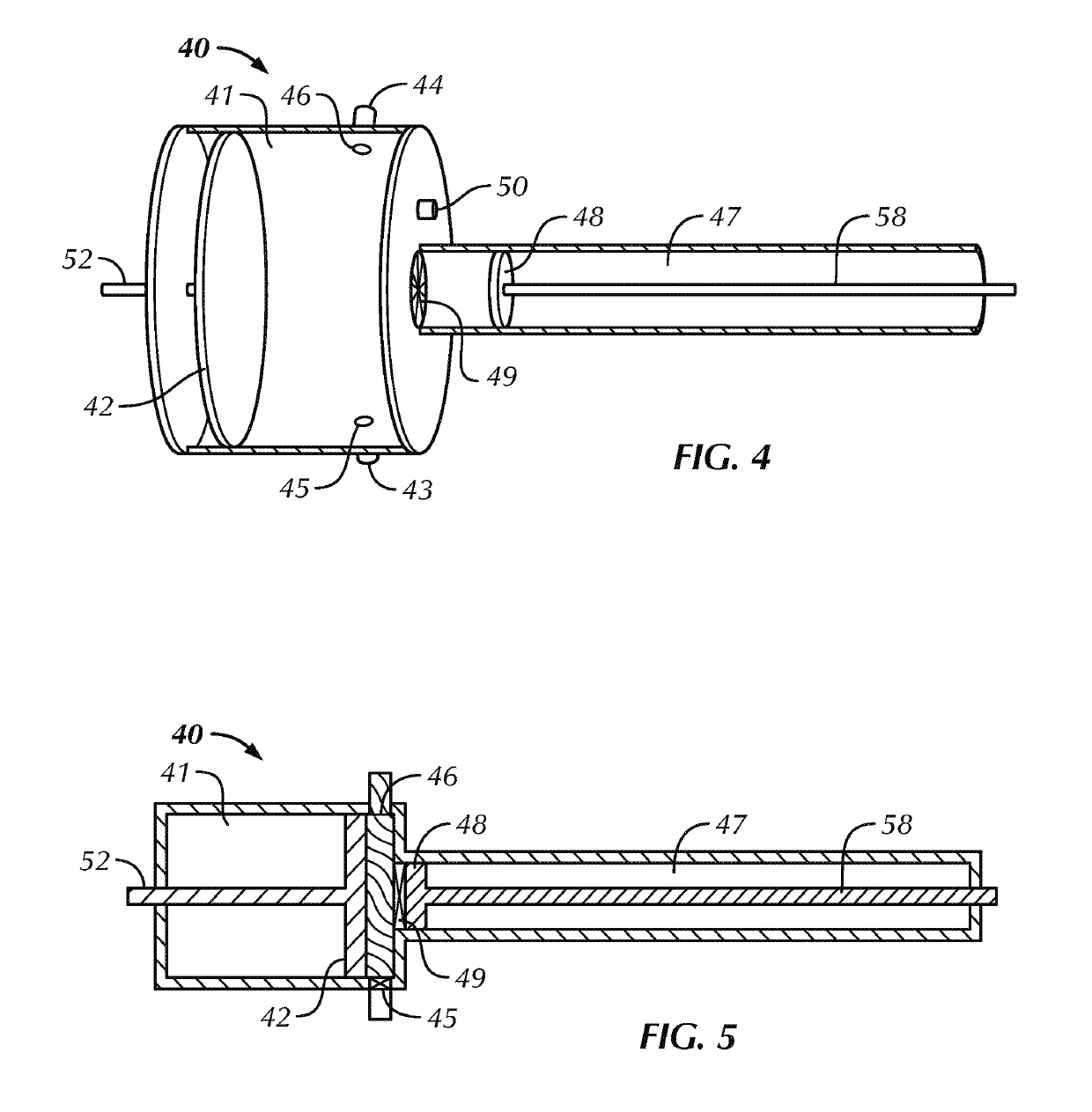Otto and diesel cycles employing spinning gas
a technology of otto cycle and diesel engine, which is applied in the direction of combustion engine, internal combustion piston engine, machine/engine, etc., can solve the problems of not employing such an effect in the practical engine cycle, such as the otto cycle, and achieves the effects of reducing nox emissions, increasing heat capacity, and increasing efficiency
- Summary
- Abstract
- Description
- Claims
- Application Information
AI Technical Summary
Benefits of technology
Problems solved by technology
Method used
Image
Examples
Embodiment Construction
[0025]A rotating gas has a rotation-dependent heat capacity, which can be used to enhance the efficiency of the internal combustion engine. Practical fuel cycles are far from the Carnot efficiency. A gas spinning at near sonic velocities increases the heat capacity enough to allow these fuel cycles to approach more closely the Carnot efficiency. In fact, a gain in fuel efficiency of several percent is shown to be theoretically possible for the Otto and Diesel cycles at conventional engine temperatures. The new limit neglects such non-ideal effects as friction, insufficient mixing, or heat transfer.
[0026]The introduction of swirl, such as in the Chrysler Hemi engine, and other associated ideas (Prasad, Galbraith), such as for cooling surfaces, are concerned with the use of swirl for creating the right amount of turbulent mixing for the fuel-air combustion. The swirl velocities in such engines are substantially subsonic. The turbulent motion is intensified by the swirl and that leads ...
PUM
 Login to View More
Login to View More Abstract
Description
Claims
Application Information
 Login to View More
Login to View More - R&D
- Intellectual Property
- Life Sciences
- Materials
- Tech Scout
- Unparalleled Data Quality
- Higher Quality Content
- 60% Fewer Hallucinations
Browse by: Latest US Patents, China's latest patents, Technical Efficacy Thesaurus, Application Domain, Technology Topic, Popular Technical Reports.
© 2025 PatSnap. All rights reserved.Legal|Privacy policy|Modern Slavery Act Transparency Statement|Sitemap|About US| Contact US: help@patsnap.com



